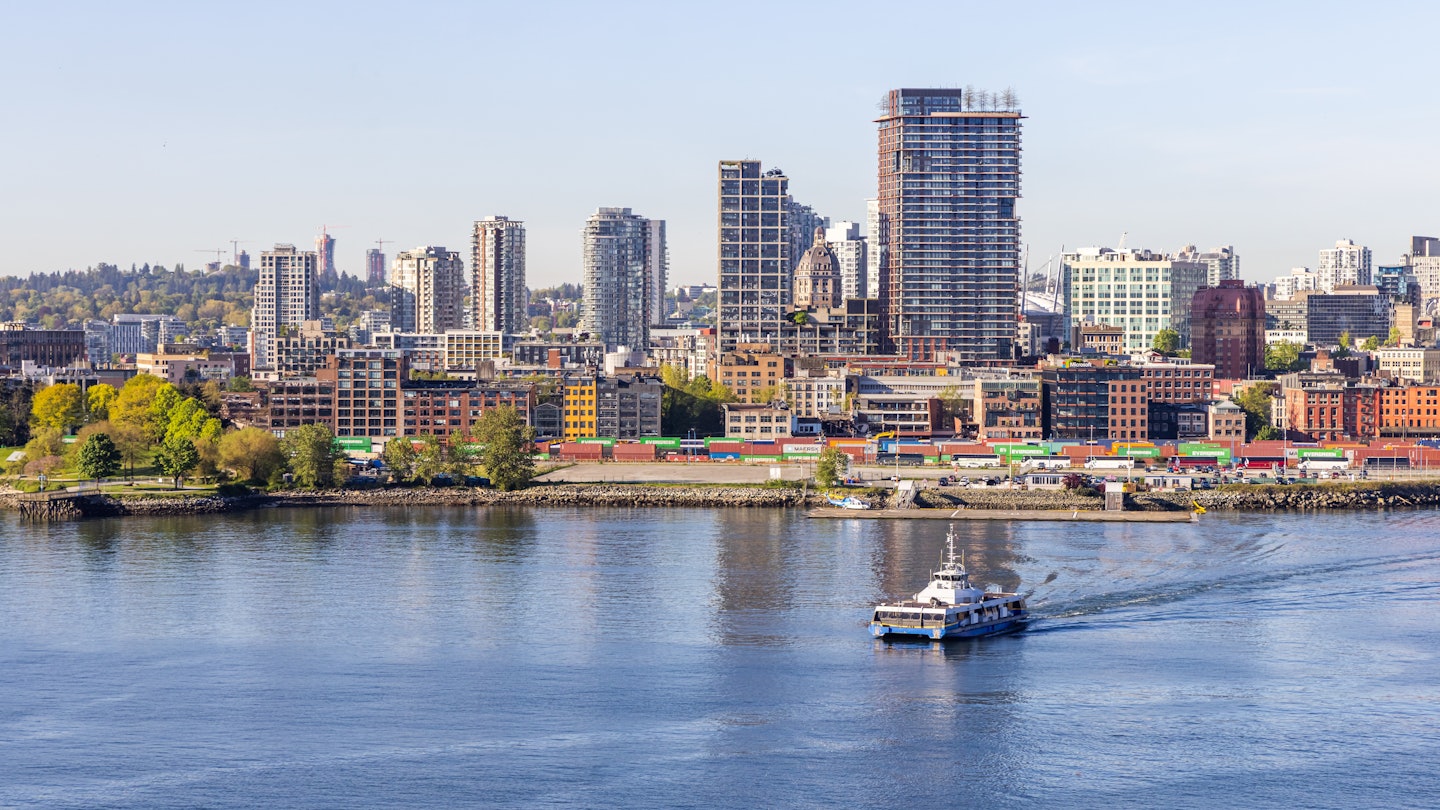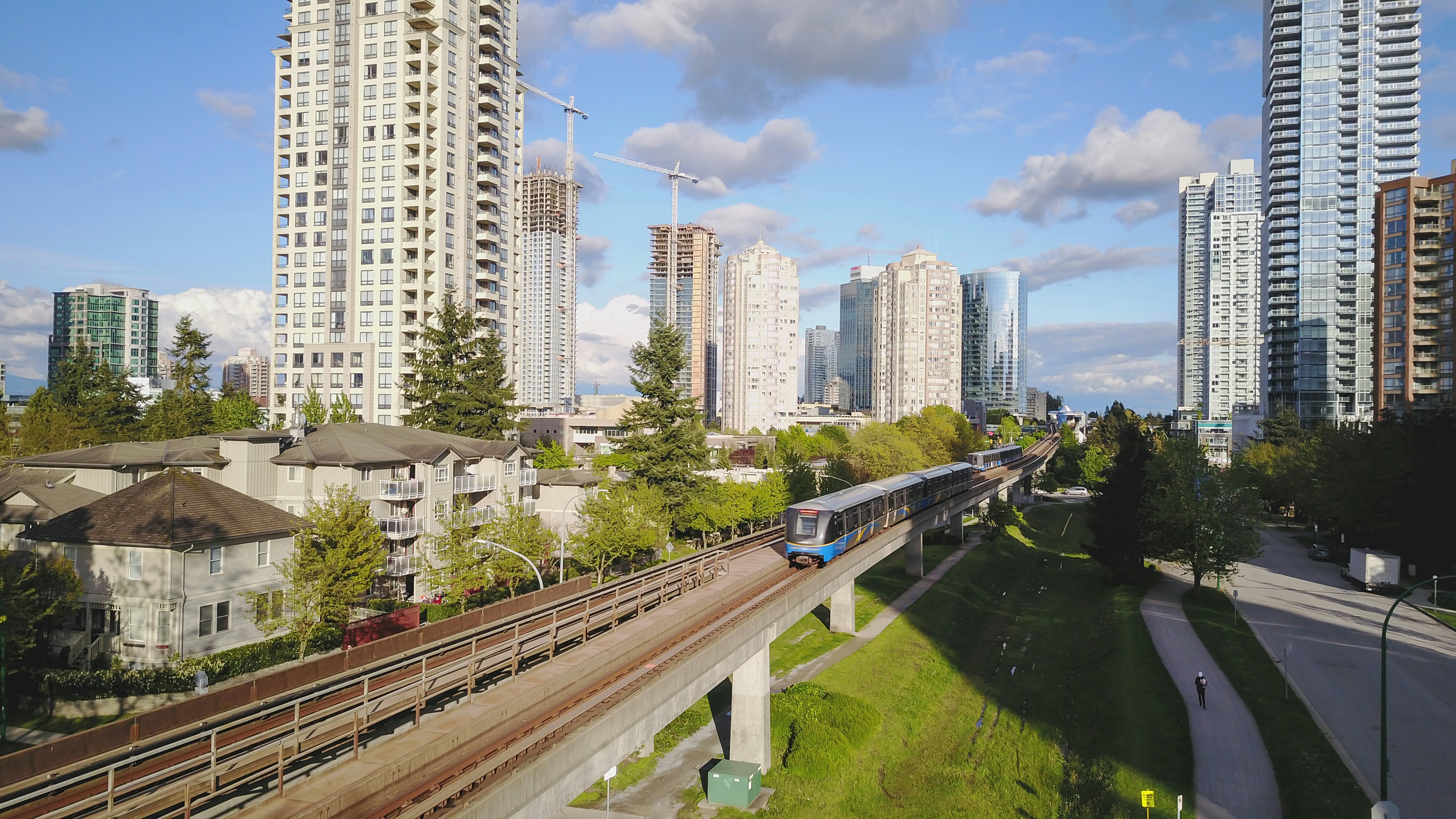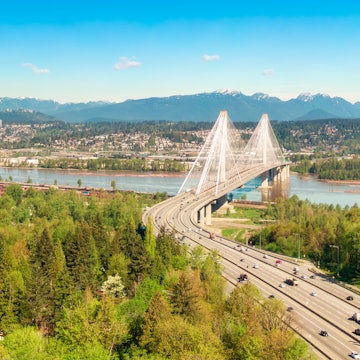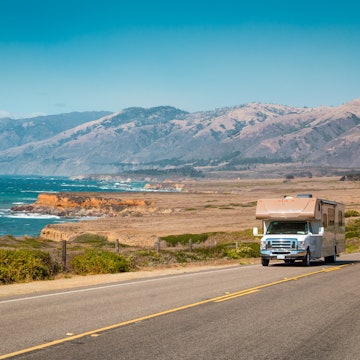
The best ways to travel around in Vancouver, with and without a car

Jul 18, 2025 • 6 min read

A SeaBus coming into port in Vancouver. EB Adventure Photography/Shutterstock
City meets seascape in Vancouver, where majestic mountains and towering trees frame the foreground of a sparkling metropolis that sits by the sea. Mild temperatures make it easy to step outside, and seawall strolls, beachside bike paths, scenic city roads and calm waterways provide endless ways to explore Vancouver, with or without a car.
If you're staying downtown, sightseeing in the city is simple by foot, ferry, bike, bus or boat, but you'll want wheels if you plan to venture further afield to explore one of the amazing day trips from Vancouver.
Getting around Vancouver without a car is made easier with a safe and accessible public transportation system. The city's Translink services will get you where you want to go, linking you to the best sites in and around Vancouver by bus, SkyTrain or SeaBus. Add the Transit App to your phone or portable device to help you get around. It’s simple to use and offers trip-planning tools, service updates and fare information.
Here are the best ways to get around Vancouver (and venture beyond) during your next stay.

Navigate your way through the city by bus
Vancouver has a safe and extensive public bus network that connects to six regions around the Metro Vancouver area. Most vehicles are equipped with bike racks, offer free wi-fi for riders and are wheelchair accessible.
Fares are reasonably priced, ranging from $2.15 (US$1.60) for concession rate, including seniors and youth ages 13 to 18, to $3.20 (US$2.35) for adults per fare zone. Children ages 12 and under ride for free.
Planning tip: If you’re considering multiple trips in the same day, a Compass Card DayPass provides unlimited transit use on all buses, SkyTrains and SeaBuses for one full day from the start of the first transit service until 4am the following day. You can use it for travel through all zones, which will save you money over buying single-fare tickets.
Cross the calm waterway by SeaBus
This passenger-only ferry offers a quick and easy way to transit from downtown Vancouver to the North Shore (North Vancouver), where you'll find the Lonsdale Quay, and the Lower Lonsdale neighborhood – a hub for shopping and dining and an entryway to the hiking trails and local ski hills of the North Vancouver region.
The 12-minute trip across the Burrard Inlet offers breathtaking views of the Vancouver skyline, making the ride alone worth the trip. Once you arrive on the other side, a bus loop will connect you to all the sites found further up.

Zip to the suburbs by SkyTrain
Vancouver's rapid-transit SkyTrain system is a great way to zip into the city from the airport, or to explore the regions found beyond the downtown core. It's a completely automated transit service that offers wheelchair accessibility and connections to bus stops at each station.
You can easily reach some of Vancouver's suburban cities, or even make have a day out on the Vancouver SkyTrain. There are three routes to choose from: the Expo Line runs southeast from downtown Vancouver to Burnaby, New West and Surrey; the Canada Line runs to the YVR airport and Richmond; and the Millennium Line runs east from Vancouver to Burnaby, Port Moody and Coquitlam.
Take the wheel and hit the road with a car rental
Car rentals can be accessed both at YVR airport and in several locations around the city. Seat belts are mandatory in and around Vancouver, and using handheld devices while driving is banned.
For route planning and driving conditions, check out DriveBC, where you'll find live webcam footage, traffic delays and direct route suggestions for your desired destination.
Planning tip: Parking in downtown Vancouver can be pricey, and spots are at a premium, so be sure to plan ahead. EasyPark is a great resource for both figuring out where to park and paying once you've arrived.
Hire a rideshare or taxi and let someone else do the driving
Uber and Lyft are both available in Vancouver, providing a great alternative to public transportation or renting a car – especially when visiting busier downtown neighborhoods. Taxis can be found throughout the city as well, with companies such as Black Top & Checker Cabs, Vancouver Taxi and Yellow Cab being the most well-established in Vancouver.

Cycle on Vancouver's many bike lanes
With a network of more than 300km (186 miles) of designated routes crisscrossing the region and designated bike lanes on the city's busier roads, traveling by bike can be a safe and low-cost way to get around.
Bike Hub is a great resource for planning your bike routes and finding transit accessibility around town. If you don't have your own set of wheels, Mobi is a bike-sharing program worth checking out, as well as Lime bikes and e-scooters.
Bike rental shops can be found around Stanley Park – home to Vancouver's popular Stanley Park seawall – as well as throughout downtown Vancouver, and Granville Island offers a complimentary bike parking service, encouraging exploration by bike in the bustling neighborhood.

Make your way along the city's coast by mini ferry
As a coastal city, Vancouver's calm waterways offer a stunning and quick means for travel. Colorful mini passenger ferries connect Granville Island, False Creek and several small ports throughout downtown.
Stopping at eight docks throughout the city and passing by some of the most beautiful waterfront sights along the way, AquaBus Ferries are bike- and wheelchair-friendly. One-way ride tickets range from $3 (US$2.20) for youths and seniors to $4.50 (US$3.30) for adults, or you can purchase a day pass offering unlimited trips for $15 US$11) for seniors) or $20 (US$15) for adults.
You can also cruise through the scenic waters of False Creek with False Creek Ferries, a great way to see the city's sights from the sea.
Float beyond the city's borders by ferry
For longer trips by water beyond the city limits, BC Ferries will take you to Vancouver Island, the Southern Gulf Islands, the Sunshine Coast and other small islands for unforgettable day or weekend trips. BC Ferries carry both passengers and vehicles, and offer on-boat shops and dining options.
Passenger fares range from $10 (US$7.50) for children aged 5 and upwards to $20 (US$15) for adults (children aged 5 and under ride for free). If you're traveling in a standard-size car, an additional fee of $75 (US$55) will apply.

Take a floatplane for a bird's-eye view of Vancouver
While it may be the most expensive (and environmentally impactful) mode of transportation, connecting to the coast is quick and easy by air.
Harbour Air is a passenger-only float plane that connects to Vancouver Island, the Sunshine Coast and even Whistler and Seattle from downtown Vancouver. If you're more interested in seeing the city and sea from above, the company also offers scenic flightseeing tours.
Helijet is another fast flight charter, which takes passengers to Vancouver Island and the Sunshine Coast by helicopter. Prices vary for both Harbour Air and Helijet routes, depending on the destination, season and time of day.
Vancouver offers excellent accessible travel
Vancouver enjoys a reputation as one of the most accessible travel destinations in the world, offering complete and immersive visitor experiences that keep varied needs in mind. All modes of public transportation provided by TransLink, including bus, SkyTrain and SeaBus services, are wheelchair accessible.
Most of the downtown sidewalks have sloping ramps, and the buildings, beaches and parking lots provide accessible corridors, paths, ramps and elevators for easy access for everyone. Most city crosswalks are equipped with audible signals to safely guide those who are hard of hearing and visually impaired. Service dogs are legally allowed in all restaurants, shops and hotels.
For more on Vancouver's progressive efforts to make the city an all-accessible destination, visit the City of Vancouver website.















